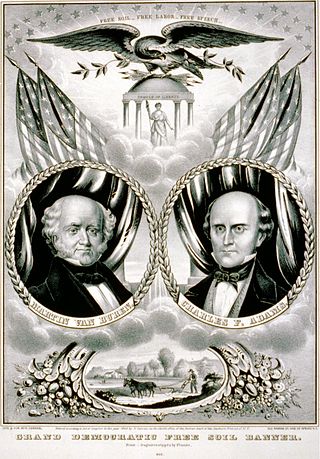
The Free Soil Party, also called the Free Democratic Party or the Free Democracy, was a political party in the United States from 1848 to 1854, when it merged into the Republican Party. The party was focused on opposing the expansion of slavery into the western territories of the United States. The 1848 presidential election took place in the aftermath of the Mexican–American War and debates over the extension of slavery into the Mexican Cession. After the Whig Party and the Democratic Party nominated presidential candidates who were unwilling to rule out the extension of slavery into the Mexican Cession, anti-slavery Democrats and Whigs joined with members of the Liberty Party to form the new Free Soil Party. Running as the Free Soil presidential candidate, former President Martin Van Buren won 10.1 percent of the popular vote, the strongest popular vote performance by a third party up to that point in U.S. history.

Cazenovia is a village located in the Town of Cazenovia in Madison County, New York, United States. As of the 2010 census, the village had a population of 2,835. The village lies on the southeastern shore of Cazenovia Lake, which is approximately 4 miles (6.4 km) long and .5 mile across. Cazenovia is within a half hour of Syracuse, New York. The village is located on US Route 20 and New York State Route 13, and was home to Cazenovia College.

The American Anti-Slavery Society (AASS) was an abolitionist society in the United States. AASS formed in 1833 in response to the nullification crisis and the failures of existing anti-slavery organizations, such as the American Colonization Society. AASS formally dissolved in 1870.

James William Charles Pennington was an American historian, abolitionist, orator, minister, writer, and social organizer. Pennington is the first known Black student to attend Yale University. He was ordained as a minister in the Congregational Church, later also serving in Presbyterian churches for congregations in Hartford, Connecticut, and New York. After the Civil War, he served congregations in Natchez, Mississippi, Portland, Maine, and Jacksonville, Florida.

The Fugitive Slave Act or Fugitive Slave Law was a law passed by the 31st United States Congress on September 18, 1850, as part of the Compromise of 1850 between Southern interests in slavery and Northern Free-Soilers.
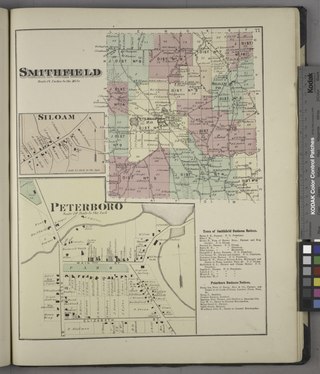
Peterboro, located approximately 25 miles (40 km) southeast of Syracuse, New York, is a historic hamlet and currently the administrative center for the Town of Smithfield, Madison County, New York, United States. Peterboro has a Post Office, ZIP code 13134.
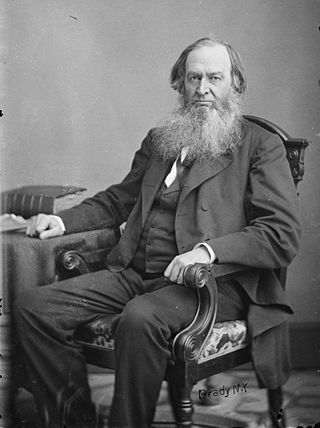
Gerrit Smith, also spelled Gerritt Smith, was an American social reformer, abolitionist, businessman, public intellectual, and philanthropist. Married to Ann Carroll Fitzhugh, Smith was a candidate for President of the United States in 1848, 1856, and 1860. He served a single term in the House of Representatives from 1853 to 1854.

Rev. Jermain Wesley Loguen, born Jarm Logue, in slavery, was an African-American abolitionist and bishop of the African Methodist Episcopal Zion Church, and an author of a slave narrative.

Beriah Green Jr. was an American reformer, abolitionist, temperance advocate, college professor, minister, and head of the Oneida Institute. He was "consumed totally by his abolitionist views". Former student Alexander Crummell described him as a "bluff, kind-hearted man," a "master-thinker". Modern scholars have described him as "cantankerous", "obdurate," "caustic, belligerent, [and] suspicious". "He was so firmly convinced of his opinions and so uncompromising that he aroused hostility all about him."

Sherman Miller Booth was an abolitionist, editor and politician in Wisconsin, and was instrumental in forming the Liberty Party, the Free Soil Party and the Republican Party. He became known nationally after helping instigate a jailbreak for a runaway slave in violation of the Fugitive Slave Act.
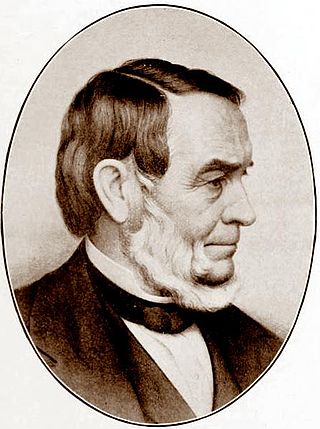
Samuel Joseph May was an American reformer during the nineteenth century who championed education, women's rights, and abolition of slavery. May argued on behalf of all working people that the rights of humanity were more important than the rights of property, and advocated for minimum wages and legal limitations on the amassing of wealth.
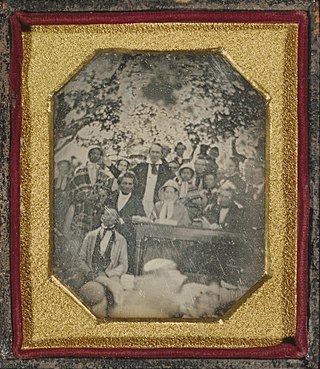
Ezra Greenleaf Weld, often known simply as "Greenleaf", was a photographer and an operator of a daguerreotype studio in Cazenovia, New York. He and his family were involved with the abolitionist movement.

Mary Edmonson (1832–1853) and Emily Edmonson, "two respectable young women of light complexion", were African Americans who became celebrities in the United States abolitionist movement after gaining their freedom from slavery. On April 15, 1848, they were among the 77 slaves who tried to escape from Washington, D.C., on the schooner The Pearl to sail up the Chesapeake Bay to freedom in New Jersey.

William Cooper Nell was an American abolitionist, journalist, publisher, author, and civil servant of Boston, Massachusetts, who worked for the integration of schools and public facilities in the state. Writing for abolitionist newspapers The Liberator and The North Star, he helped publicize the anti-slavery cause. He published the North Star from 1847 to 1851, moving temporarily to Rochester, New York.

The Jerry Rescue occurred on October 1, 1851, and involved the public rescue of a fugitive slave who had been arrested the same day in Syracuse, New York, during the anti-slavery Liberty Party's state convention. The escaped slave was William Henry, a 40-year-old cooper from Missouri whose slave name was "Jerry."
The Liberty Party was an abolitionist political party in the United States before the American Civil War. The party experienced its greatest activity during the 1840s, while remnants persisted as late as 1860. It supported James G. Birney in the presidential elections of 1840 and 1844. Others who attained prominence as leaders of the Liberty Party included Gerrit Smith, Salmon P. Chase, Henry Highland Garnet, Henry Bibb, and William Goodell. They attempted to work within the federal system created by the United States Constitution to diminish the political influence of the Slave Power and advance the cause of universal emancipation and an integrated, egalitarian society.
Ann Carroll Smith was an American abolitionist, mother of Elizabeth Smith Miller, and the spouse of Gerrit Smith. Her older brother was Henry Fitzhugh.

William Lawrence Chaplin was an abolitionist in the years before the American Civil War. Known by the title of "General," he was an agent for the American Anti-Slavery Society and a general agent for the Underground Railroad. He was imprisoned for the attempted escape of two individuals, which required $25,000 to get out of jail and safely out of Maryland. He was an editor at two anti-slavery newspapers and he was a Harvard-educated lawyer for a couple of years. He and his wife operated the Glen Haven Water Cure spa in his later years.

The National Abolition Hall of Fame and Museum is a museum located in Peterboro, New York, that honors American abolitionists by showcasing their work to end slavery, and the legacy of their struggle: the drive to end racism.

In the District of Columbia, the slave trade was legal from its creation until it was outlawed as part of the Compromise of 1850. That restrictions on slavery in the District were probably coming was a major factor in the retrocession of the Virginia part of the District back to Virginia in 1847. Thus the large slave-trading businesses in Alexandria, such as Franklin & Armfield, could continue their operations in Virginia, where slavery was more secure.



















